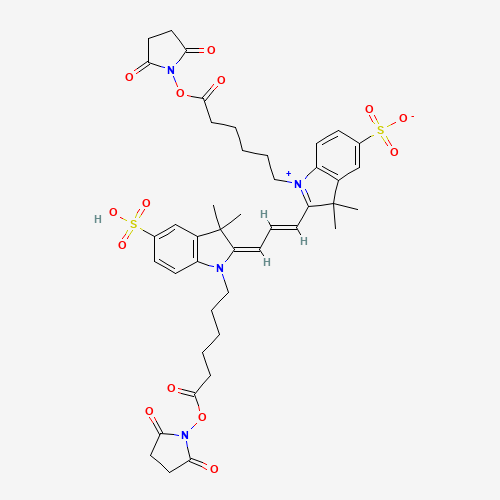Cyanine3-NHS on FRET (fluorescence resonance energy transfer) CY3-active ester Molecular localization
Cyanine3-NHS (CY3-NHS) is often used as a donor or acceptor dye in FRET (fluorescence resonance energy transfer) techniques to study intermolecular interactions and distance changes. The following are applications of CY3-NHS in FRET:
1. Intermolecular interaction studies:
CY3-NHS can be co-labeled with either a donor dye or a receptor dye for FRET studies of intermolecular interactions. For example, in protein interaction studies, CY3-NHS can be labeled with a donor dye on one protein and a receptor dye on another protein. When these two proteins interact, the intensity and efficiency of the FRET signal changes, and thus the extent of their interaction and kinetic parameters can be inferred.
2. Molecular distance measurements:
CY3-NHS can be co-labeled with a donor dye or an acceptor dye for FRET distance measurements for measuring intermolecular distance changes. For example, in structural and conformational studies of membrane proteins, CY3-NHS can be labeled at one site on the membrane protein and the donor dye at another site. By measuring changes in the intensity and efficiency of the FRET signal, the change in distance between these two positions can be inferred, thus revealing the conformational dynamics and functional mechanisms of membrane proteins.
3. Molecular localization and orientation studies:
CY3-NHS can be co-labeled with a donor dye or an acceptor dye for FRET localization and targeting studies for studying the localization and targeting of molecules within a cell. For example, in intracellular protein localization studies, CY3-NHS can be labeled on one protein and the donor dye on another protein. By measuring changes in the intensity and efficiency of the FRET signal, the relative position and localization of the two proteins within the cell can be determined, as well as their orientation.

In conclusion, CY3-NHS as a donor or acceptor dye in FRET technique has important applications in intermolecular interaction studies, molecular distance measurements and molecular localization and orientation studies. By co-purposing with donor or acceptor dyes in FRET, CY3-NHS enables the study of intermolecular interactions, distance changes and localization and orientation, thus revealing the structure, function and kinetic mechanisms of molecules. These applications have a wide range of potential applications in fields such as biology, chemistry and materials science.




 渝公网安备 50010902000940号
渝公网安备 50010902000940号